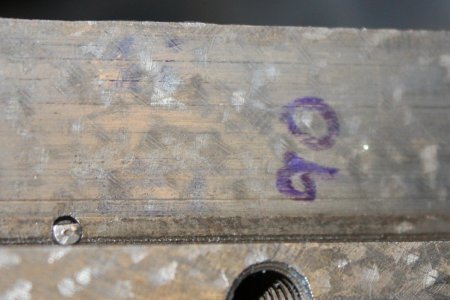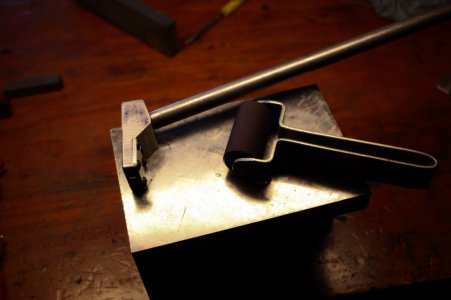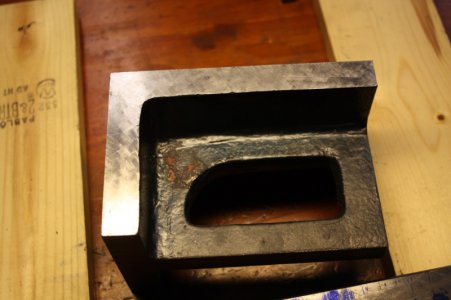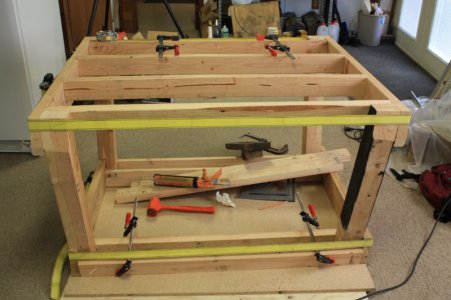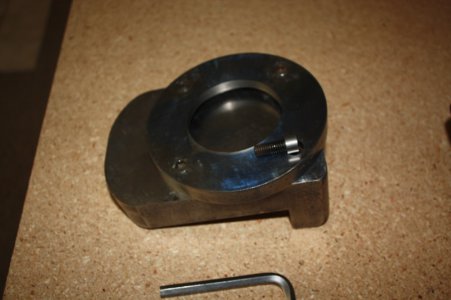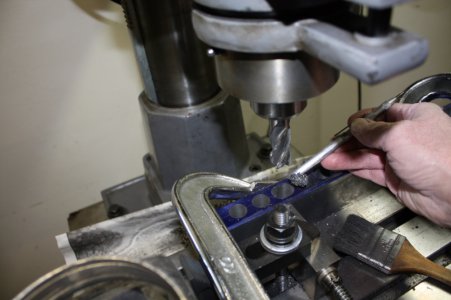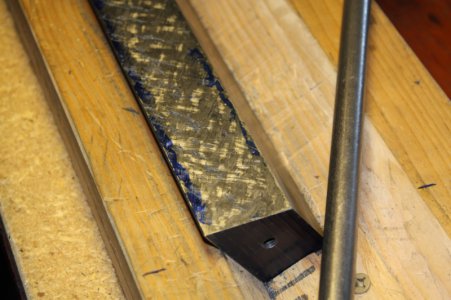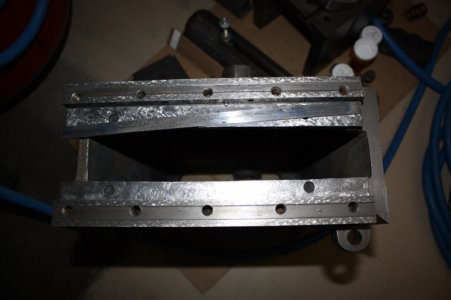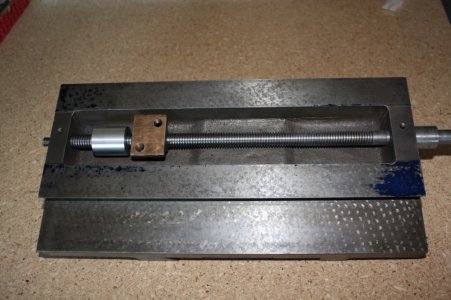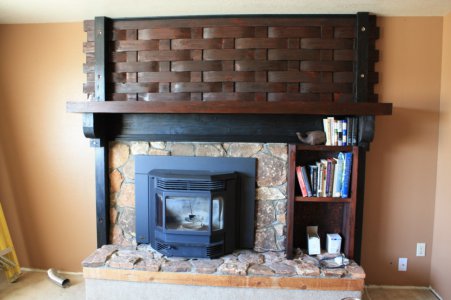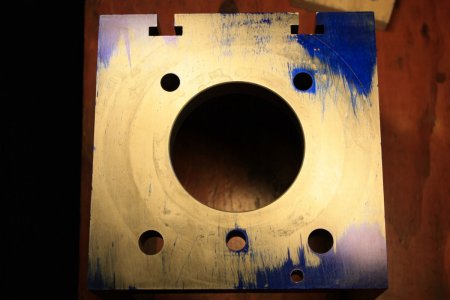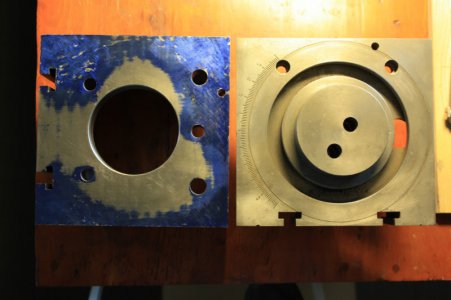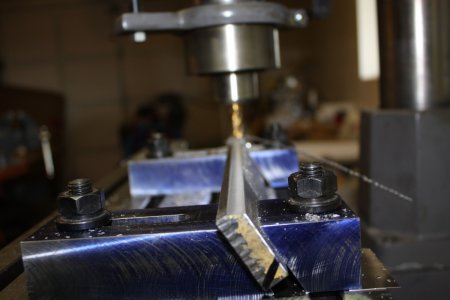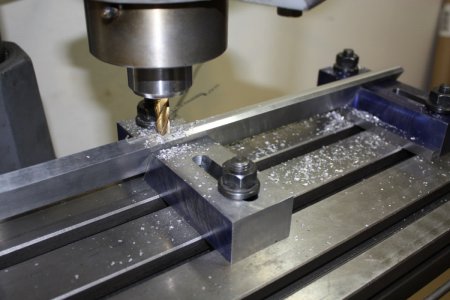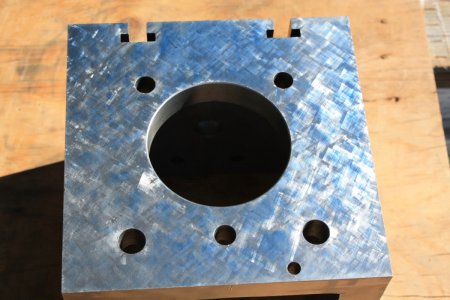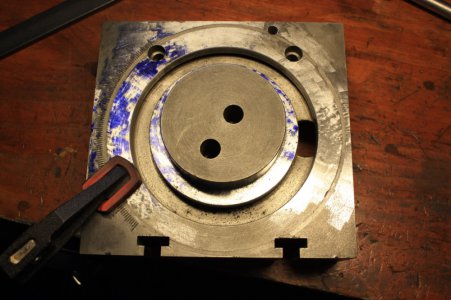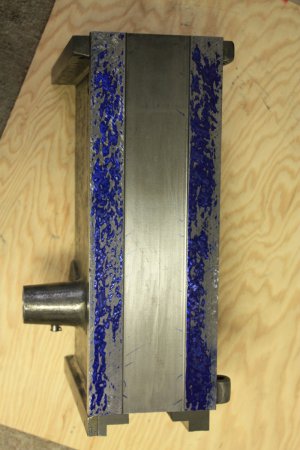- Joined
- Mar 3, 2014
- Messages
- 634
Re: Rhodes Shaper
Got to true the vice up.
The working face is close enough though I'll be rechecking everything later.
Started on the bottom of the vice. I already posted a pic showing it was high on one end.
Here's how it blued.
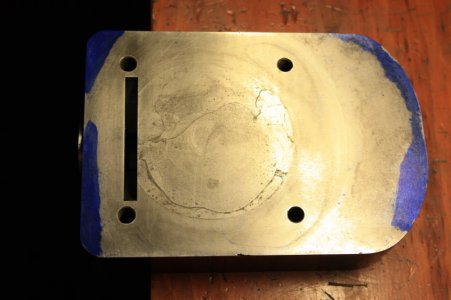 The high end is the slotted one.
The high end is the slotted one.
To true it up, the high area needs to be reduced and the other end should roll in for a better blue. Plus, I'm checking it with the indicator to avoid rolling it side to side.
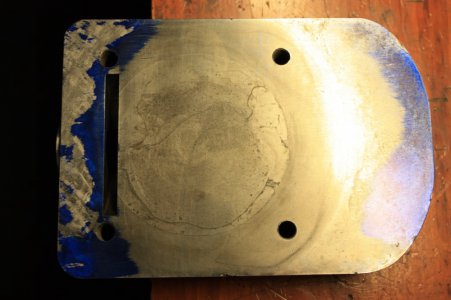 A bit of improvement.
A bit of improvement.
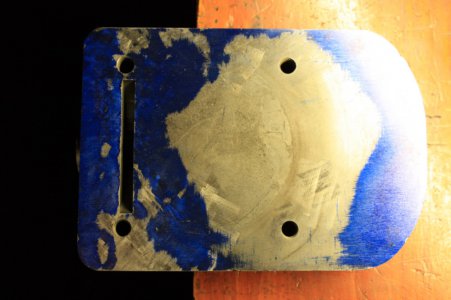 A bit more.
A bit more.
You can see the mounting holes and lines where the base ring bolts up.
I got further along with this than the pics show.
Had to stop as I had some windows open and those high winds came back.
Found grit was landing on the plate and I couldn't keep it clean.
Checked out some of the bearing surface on top of the body casting.
Needed to know what I could use for a reference for the offside vertical face that the ram runs against.
Had to use a dry stone and lightly check for burrs.
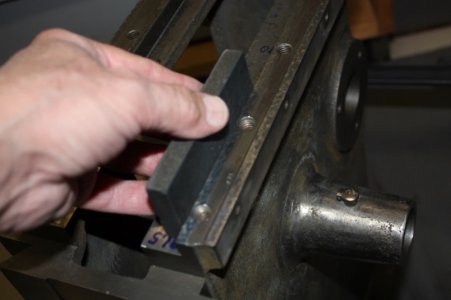
Here come those adjustable parallels again.
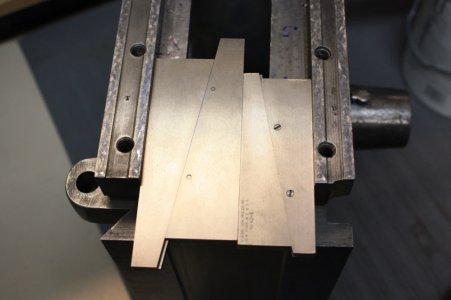
Unfortunately, I don't have a three to four inch mic. Have to make due with dial calipers.
I have seen inspectors check parts with calipers and repeatedly read them to the nearest tenth. That was in a controlled environment with all conditions being perfect and with parts that required close tolerance, they used a mic.
So check the calibration of those calipers before each use and once you get a feel for them you should be able to read between the lines for readings within a couple of tents.
Of course a mic would be much better.
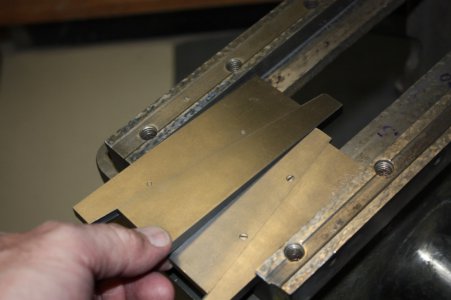 Here, the outside end of the parallels will easly pick up while the inside stays lightly snug. Shows these ways are belled to the outside.
Here, the outside end of the parallels will easly pick up while the inside stays lightly snug. Shows these ways are belled to the outside.
Here's how I stood the parallels to take readings. If they are properly set and the surfaces are true, you'll get them squarely set but I also checked with a square.
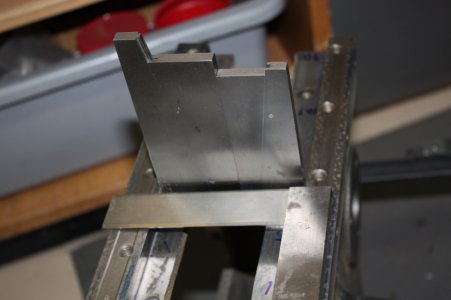
After checking both ends and the middle area, I decided the side opposite or, where the gib rests, could be used as a standard to keep the working side parallel.
Measuring down to the horizontal ways can be done this way while roughing in.
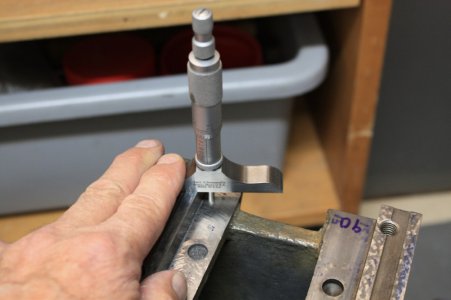
As it gets close, this is a better way to measure.
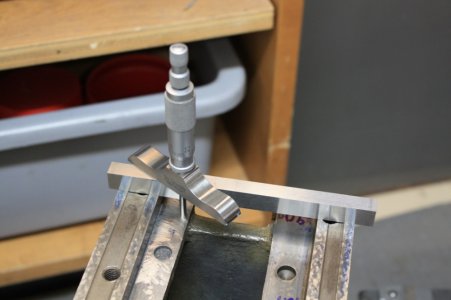 A parallel spanning both sides to measure from.
A parallel spanning both sides to measure from.
Edit: Thought I ought to add that the final surface has to be completed using a master. In this case, that will be the ram after it's scraped in.
All this measuring just gets me two bearing areas that are fairly true to each other and flat so the blue will go faster.









Got to true the vice up.
The working face is close enough though I'll be rechecking everything later.
Started on the bottom of the vice. I already posted a pic showing it was high on one end.
Here's how it blued.
 The high end is the slotted one.
The high end is the slotted one.To true it up, the high area needs to be reduced and the other end should roll in for a better blue. Plus, I'm checking it with the indicator to avoid rolling it side to side.
 A bit of improvement.
A bit of improvement. A bit more.
A bit more.You can see the mounting holes and lines where the base ring bolts up.
I got further along with this than the pics show.
Had to stop as I had some windows open and those high winds came back.
Found grit was landing on the plate and I couldn't keep it clean.
Checked out some of the bearing surface on top of the body casting.
Needed to know what I could use for a reference for the offside vertical face that the ram runs against.
Had to use a dry stone and lightly check for burrs.

Here come those adjustable parallels again.

Unfortunately, I don't have a three to four inch mic. Have to make due with dial calipers.
I have seen inspectors check parts with calipers and repeatedly read them to the nearest tenth. That was in a controlled environment with all conditions being perfect and with parts that required close tolerance, they used a mic.
So check the calibration of those calipers before each use and once you get a feel for them you should be able to read between the lines for readings within a couple of tents.
Of course a mic would be much better.
 Here, the outside end of the parallels will easly pick up while the inside stays lightly snug. Shows these ways are belled to the outside.
Here, the outside end of the parallels will easly pick up while the inside stays lightly snug. Shows these ways are belled to the outside.Here's how I stood the parallels to take readings. If they are properly set and the surfaces are true, you'll get them squarely set but I also checked with a square.

After checking both ends and the middle area, I decided the side opposite or, where the gib rests, could be used as a standard to keep the working side parallel.
Measuring down to the horizontal ways can be done this way while roughing in.

As it gets close, this is a better way to measure.
 A parallel spanning both sides to measure from.
A parallel spanning both sides to measure from.Edit: Thought I ought to add that the final surface has to be completed using a master. In this case, that will be the ram after it's scraped in.
All this measuring just gets me two bearing areas that are fairly true to each other and flat so the blue will go faster.









Last edited:

